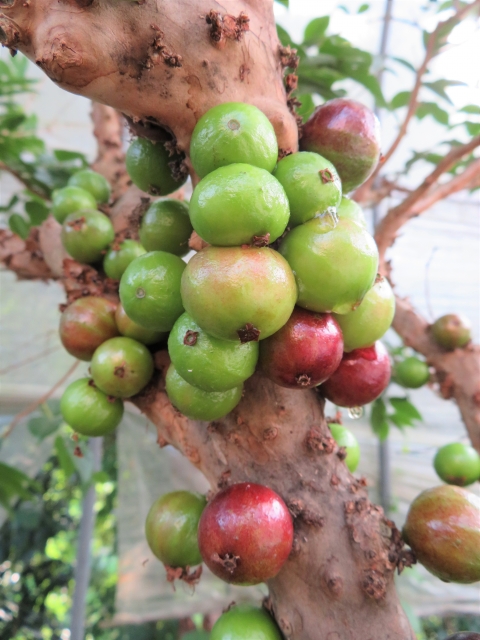
Hey AYA-jii, I found a strange fruit tree in the greenhouse at Jindai Botanical Garden. The flowers and fruits grow directly from the trunk!

That must be Jabuticaba. It’s a mysterious fruit tree native to Brazil, famous for its unusual “cauliflory” habit—flowers and fruit growing directly from the trunk. You were lucky to spot it, since it’s rarely seen!

Fruit growing right out of the trunk? That’s amazing! Tell me more!
What Is Jabuticaba? Origin and Features
Jabuticaba (Myrciaria cauliflora) is a tropical fruit tree native to southern Brazil and other parts of South America. It can grow several meters tall with evergreen leaves, looking like an ordinary tree at first glance. Its most striking feature is that small white flowers and dark purple fruits grow directly on the trunk and thick branches. This unique trait is called cauliflory, making it one of the rarest habits among fruit trees worldwide.
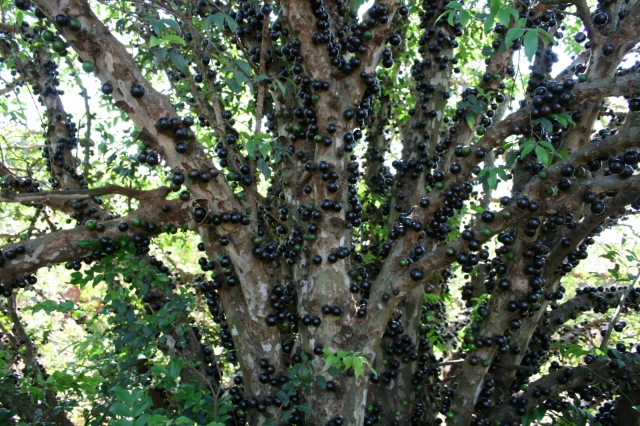
The flowers are about 1 cm across, white with five petals. The fruits are round, 2–3 cm in diameter, ripening to deep purple and resembling grapes. In fact, it is often called the “Brazilian Grape Tree” in English. The sweet-tart flavor is also grape-like, and the fruits are eaten fresh or made into juice, jam, wine, or liqueur.
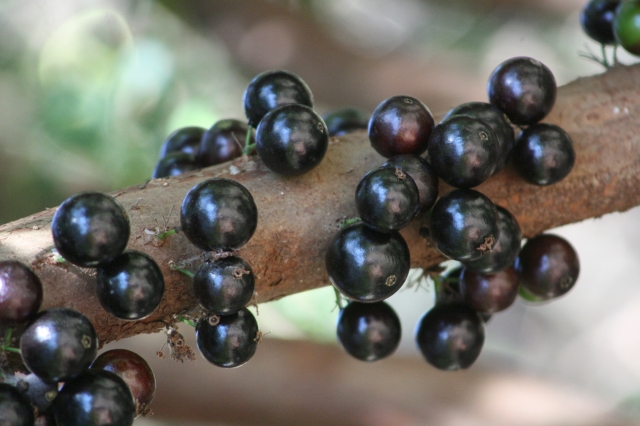
The Wonder of Flowers and Fruits on the Trunk
Most fruit trees bear flowers and fruits at branch tips or leaf axils. But Jabuticaba blooms directly on the trunk, which soon becomes covered with tightly packed flowers and later fruit. The unusual sight often stuns first-time visitors, drawing comparisons to grapes pasted onto a tree trunk.
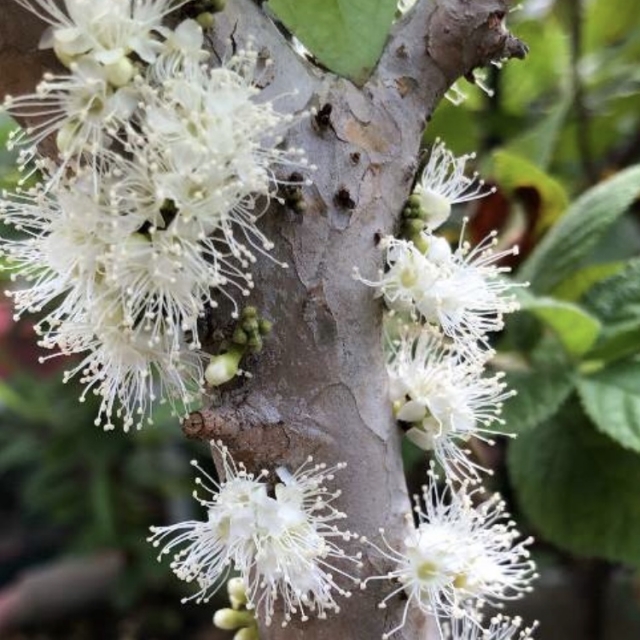
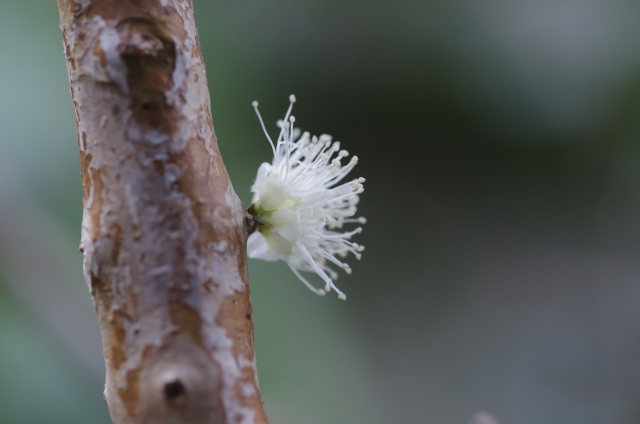
The Jabuticaba tree at Jindai Botanical Garden’s greenhouse is still small. Only two fruits happened to ripen recently, so witnessing flowers or fruits is truly a stroke of luck. Finding its dark purple berries in person feels like a once-in-a-lifetime encounter.
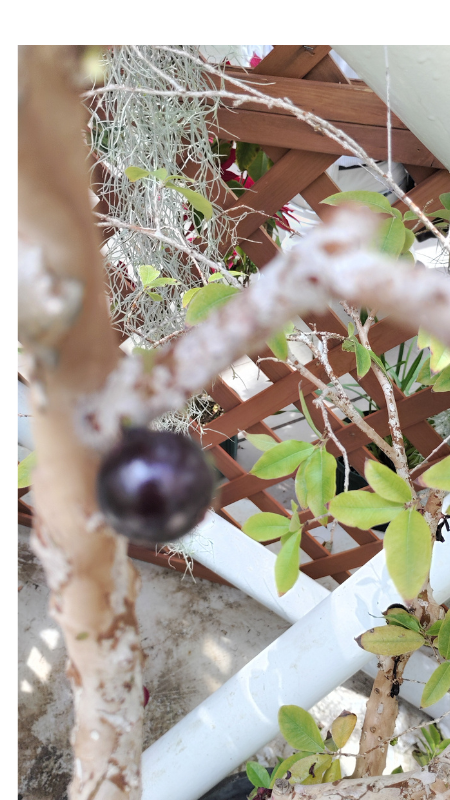
Jabuticaba in Brazilian Culture and Cuisine
In Brazil, Jabuticaba is commonly grown in home gardens. During harvest season, children are often seen picking fruits directly from the trunk. The skin can be eaten along with the juicy pulp, which is rich in polyphenols. Families make homemade jams and jellies, and the fruits are also used for wines and liqueurs. Its sweet aroma and dark juice make it a favorite at local markets.
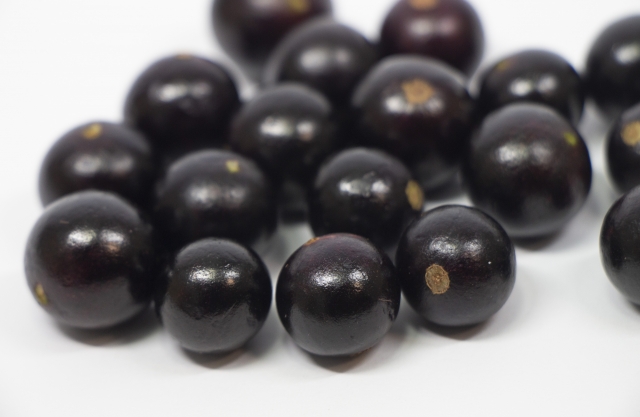
In some regions, Jabuticaba has also been valued in folk medicine for its antioxidant and digestive benefits. This cultural background makes it more than just a fruit tree—it is a plant deeply connected to daily life.
Cultivation and Display in Japan
Because Jabuticaba is sensitive to cold, outdoor cultivation in Japan is difficult. Some experimental plantings have been tried in southern Kyushu, taking advantage of the warm climate. In the past, a farm in Ibusuki, Kagoshima tested container cultivation, though it is no longer open to the public. Today, limited cultivation is also reported in Shizuoka. For most of Japan, however, greenhouses are necessary.
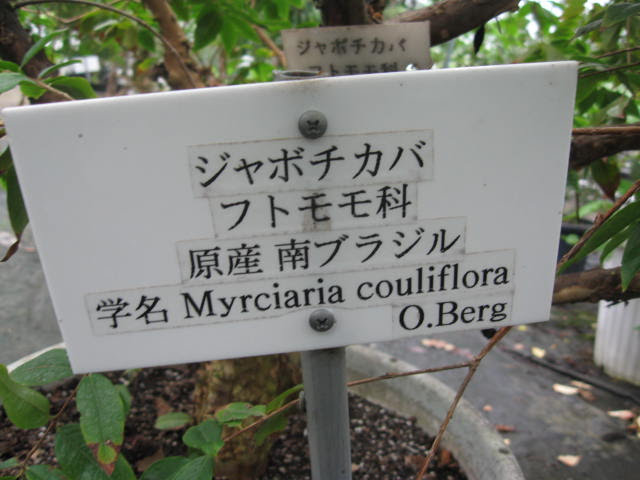
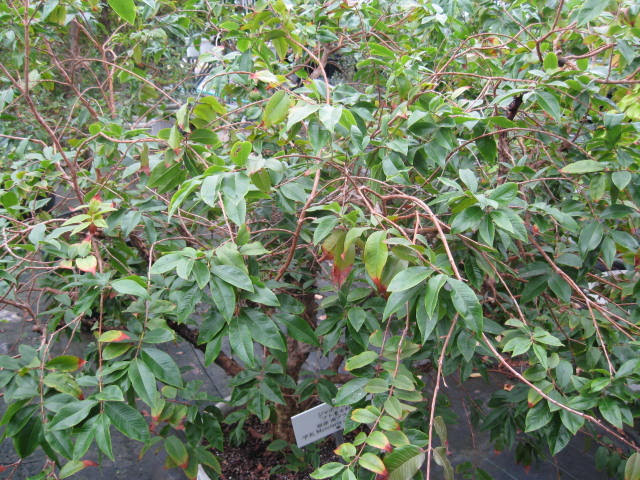
This is why seeing Jabuticaba at Jindai Botanical Garden is so meaningful. For visitors in Tokyo, it is a rare chance to encounter a tropical fruit tree normally confined to South America. Especially if it happens to be fruiting, it is a precious “once-in-a-while” moment worth documenting.
Trying Cultivation at Home
Jabuticaba can also be grown as a potted ornamental fruit tree. Since it is tropical, it must be protected from temperatures below 5°C (41°F). In Kanto and farther north, indoor or greenhouse care is essential. Growth is relatively slow, but under the right conditions, even potted trees can flower and fruit—though it may take around eight years.
Key Care Tips:
・Light: Prefers sun, but partial shade is best in summer to prevent leaf scorch.
・Water: Sensitive to dryness. Water generously when the surface dries. Maintain humidity with misting if possible.
・Soil: Needs well-draining yet moisture-retentive soil mix (e.g., akadama, leaf mold, vermiculite).
・Fertilizer: Use organic or liquid fertilizers during growth season for better fruiting.
・Winter: Keep above 10°C (50°F). Avoid direct heating drafts and monitor dryness indoors.
Enjoying Jabuticaba at Jindai Botanical Garden
When observing Jabuticaba in the greenhouse, take time to study the trunk. You may spot tiny white flowers clinging to the bark, or even a few dark-purple berries. This rare sight draws visitors’ attention instantly. Even without flowers or fruits, its leaves and form offer a tropical charm. If you are lucky enough to witness fruiting, it feels like a special gift—an inspiration for trying your own cultivation at home.

Conclusion
Jabuticaba is a tropical fruit tree with the rare habit of bearing flowers and fruit directly from its trunk. While a beloved part of daily life in Brazil, it remains a rare sight in Japan, found mostly in greenhouses or warm regions. At Jindai Botanical Garden, it offers visitors a unique chance to experience South American culture and nature within Tokyo. Its unusual beauty and rarity make every encounter feel special.
This article introduced Jabuticaba’s origin, cultural uses, cultivation in Japan, and tips for home growing. If you happen to spot it fruiting at Jindai, share the excitement—whether on your blog or social media, it’s sure to surprise others that such an exotic fruit can be seen in Tokyo!
SEO Settings (Copy & Paste)
SEO Title: Jabuticaba at Jindai Botanical Garden | A Rare Tropical Fruit Tree in Tokyo
Meta Description: Discover Jabuticaba, the “Brazilian Grape Tree,” at Jindai Botanical Garden. Learn its origins, cultural uses, and how to grow this rare tropical fruit tree at home.
